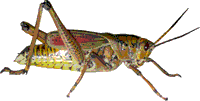Entomology Collections, General
Document Type
Article
Date of this Version
1998
Abstract
Planting soybeans [Glycine max (L.) Merrill early and in narrow rows is the most effective cultural control for preventing outbreaks of Helicoverpa zea (Boddie) in soybean. Soybeans planted early in narrow rows close canopy earlier in the season compared with soybeans planted late and in wide rows (i.e., leaves of plants from adjacent rows touch each other and eventually become densely interwoven). Although several lines of research have established dramatically higher mortality for corn earworm eggs or small larvae in closed canopies, none has found the cause. In 1994 and 1995, we planted soybeans in every combination of early (mid-May) and late (mid-June) planting and narrow (0.46 m) and wide (0.92 m) row spacing to provide a spectrum of canopy closure and examined how canopy closure affects populations of foliage-inhabiting predators and their impact on the egg stage of the corn earworm. The most common predators were Nabis spp., Geocoris spp., Orius insidiosus (Say), and spiders. None of these predator groups' abundances was substantially affected by canopy closure. Regardless of canopy closure, predators consumed =70% of H. zea eggs exposed to predation in the field for 24 h in 5 of 6 experiments conducted over 2 yr. Egg predation does not seem to account for differences observed in the survival of this pest between open- and closed-canopy soybean fields.



Comments
Published in Environ. Entomol. 27(6): 1488-1495 (1998).